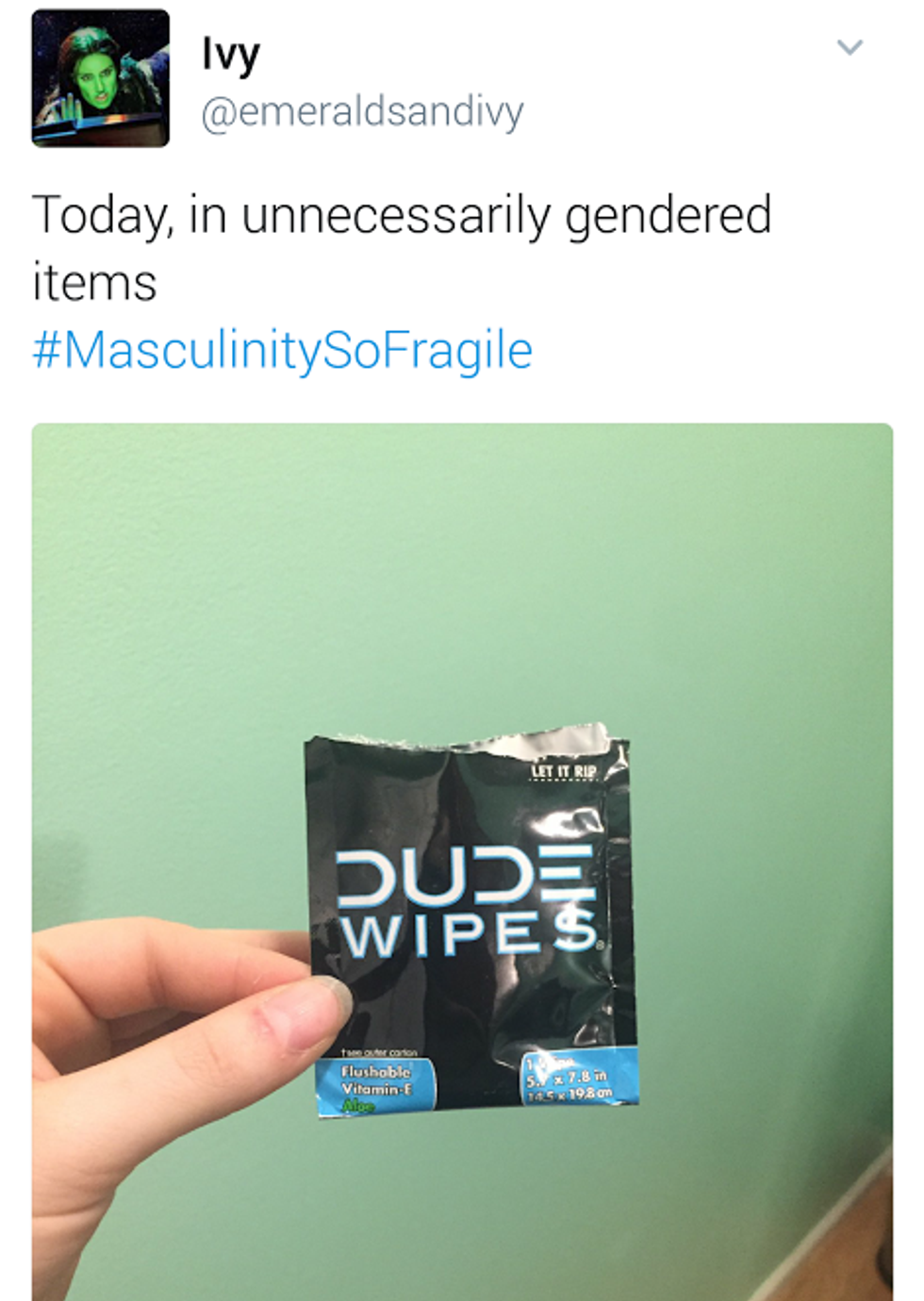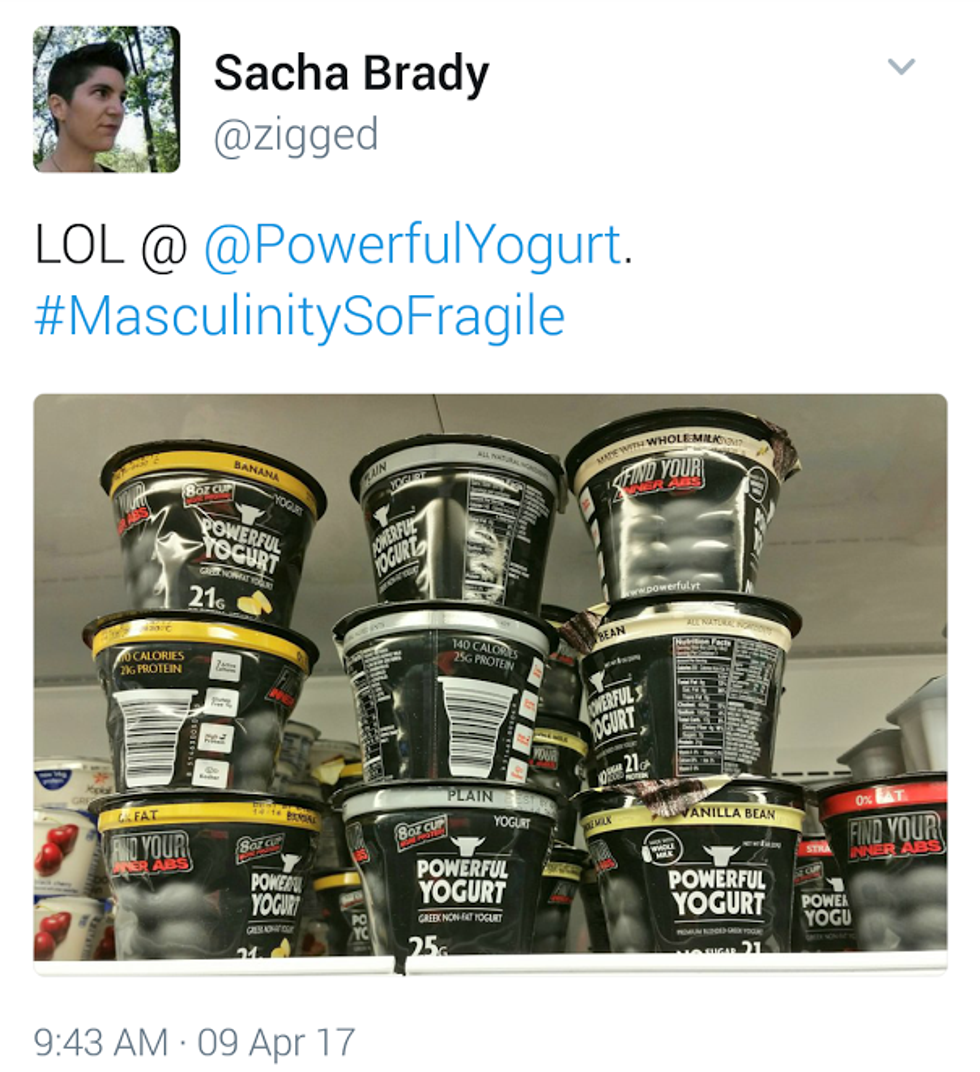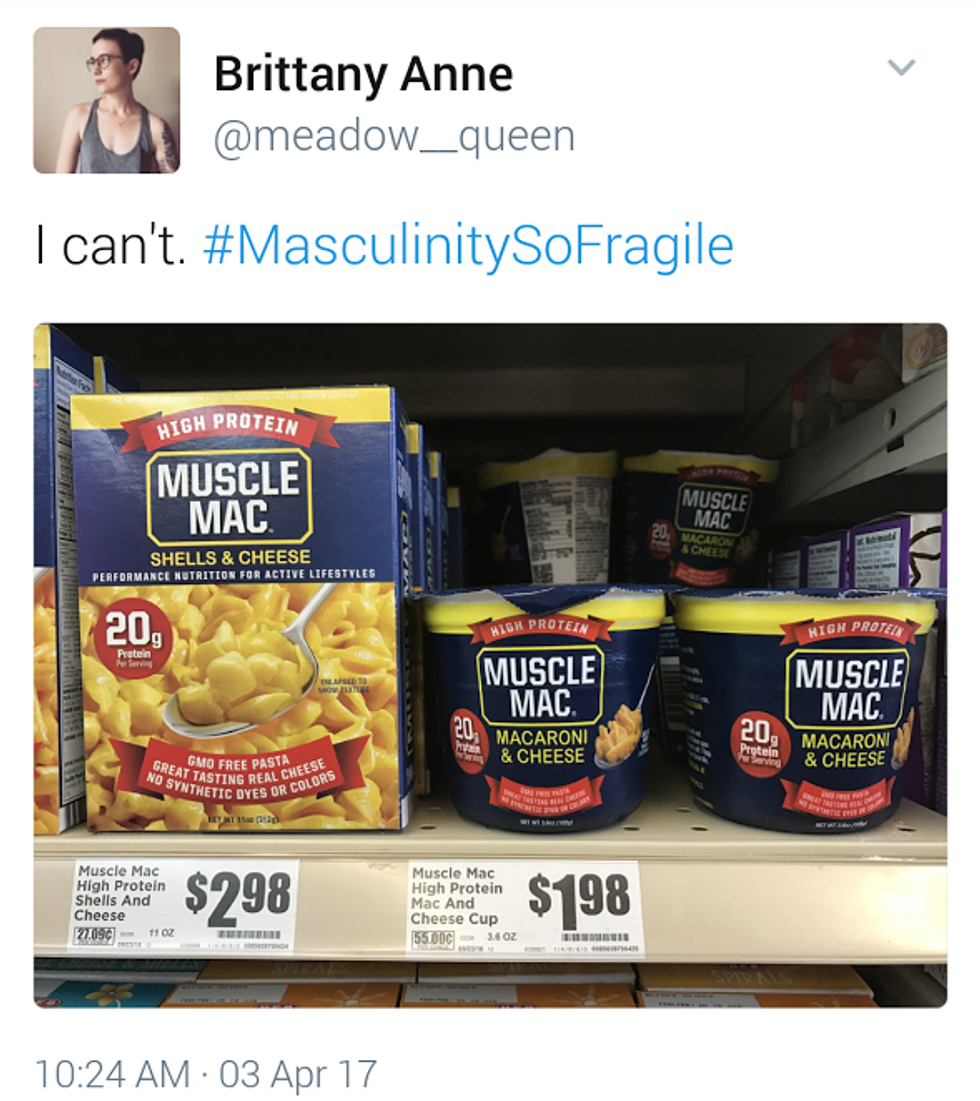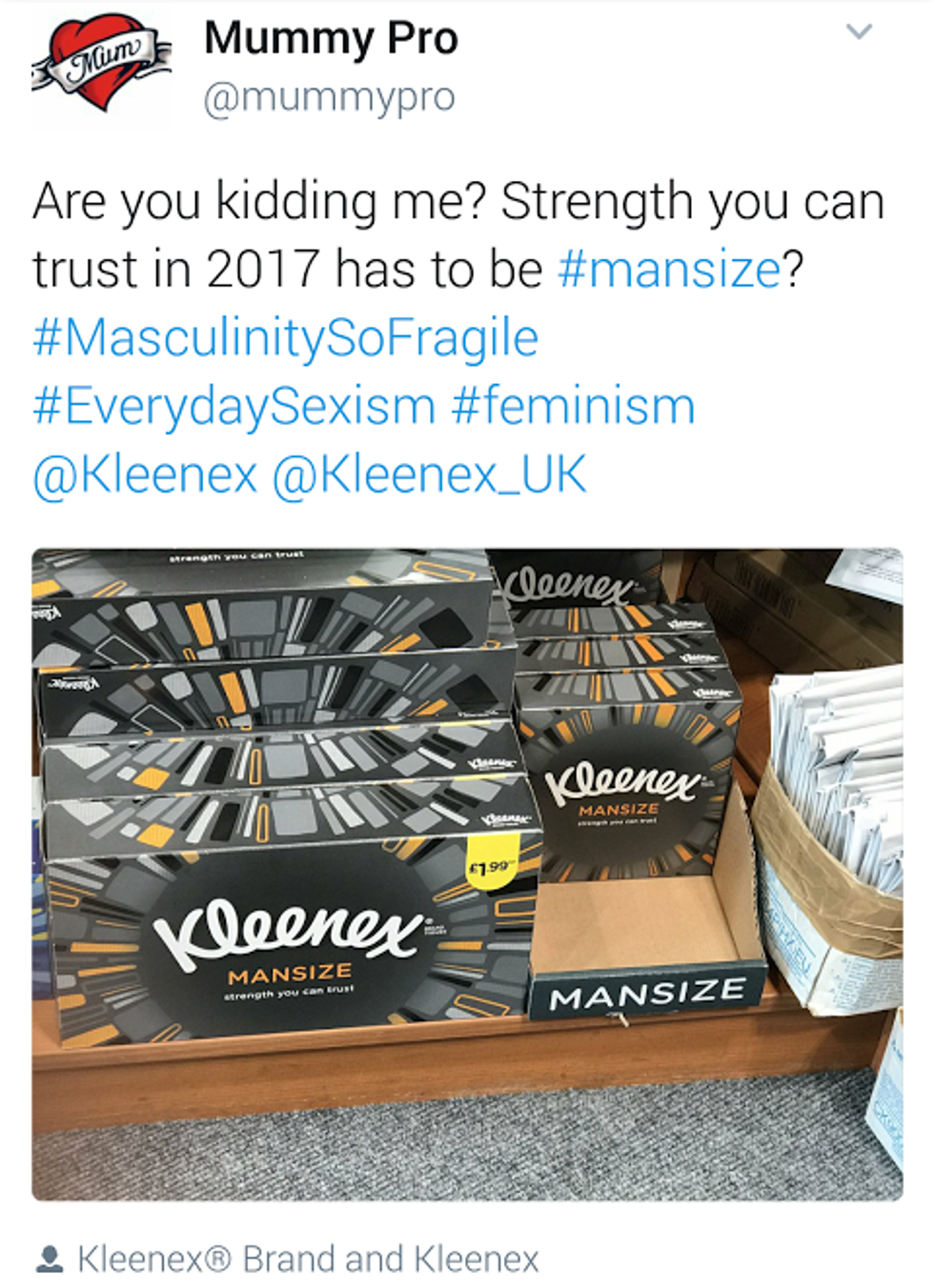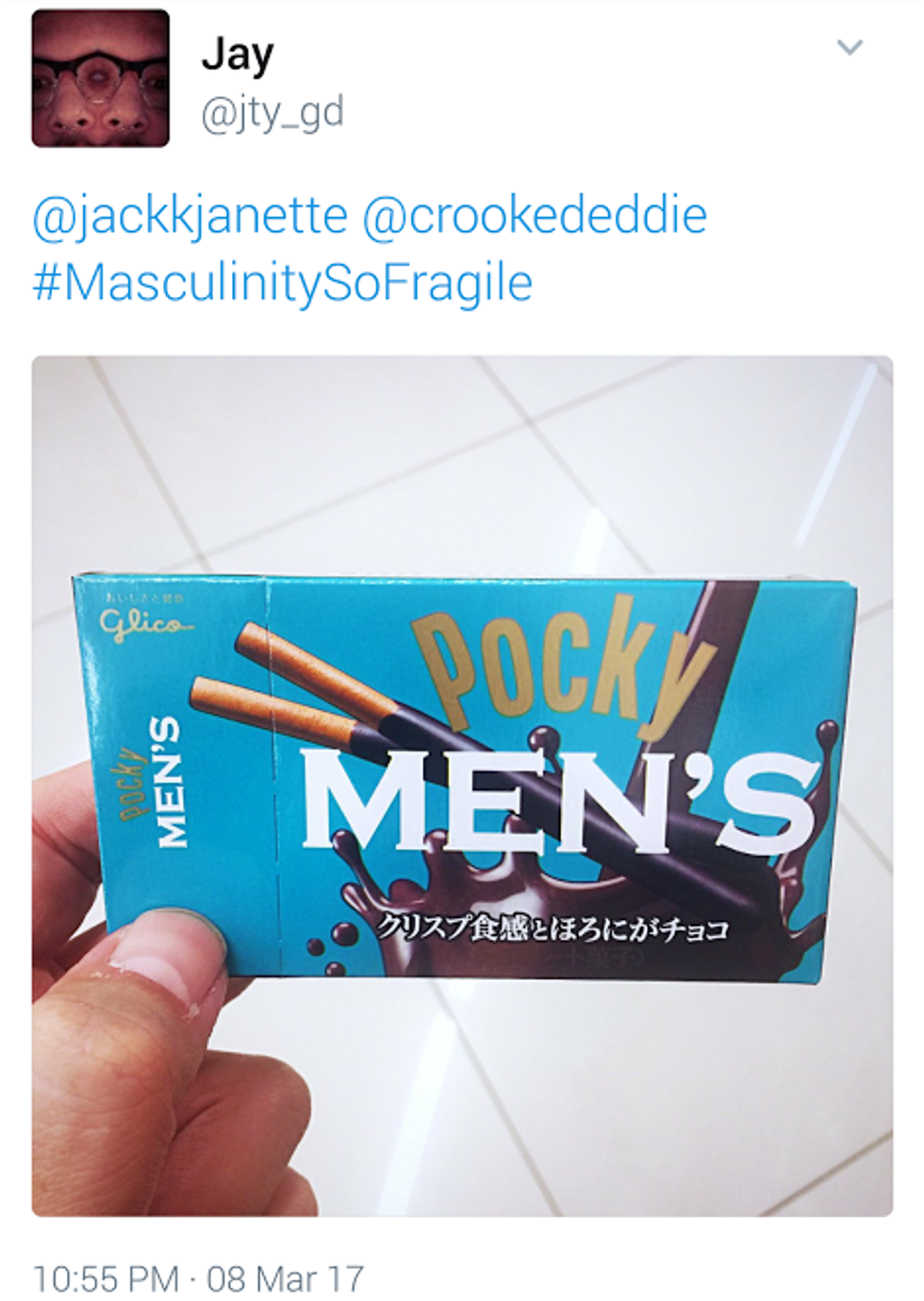A harmful trend is sweeping social media sites. You’ve probably seen it pop up on your Twitter feed or Facebook page. It’s a hashtag, #MasculinitySoFragile, paired with a photo of a product needlessly marketed towards men, or a description of an action deemed feminine, no matter how innocuous.
This movement began with the right intentions. People were fed up of products, such as pens or hand sanitizer, being catered towards a specific gender while performing in the same way. The only difference is that one comes in pink and the other in blue or one is priced higher than the other. This prompted people to call out the thing they believed was making these products possible – masculinity.
However, they have it backwards.
Masculinity did not appear out of the clouds one day and fall into society’s lap. It is not an inherent trait that makes men more aggressive or dominant or want to use something called a “Dude Wipe.”
The reason masculinity exists is because of products like these that reinforce stereotypes about what a man should look like, smell like, exercise like, and act like.
This reinforcement is so powerful that even the people participating in this trend will take products such as Muscle Mac or Powerful Yogurt and attach the hashtag to it. Nowhere on the packaging of these products does it say “for men.” Yet, people see the darkly colored packaging and intense language and automatically assume it’s “made” for men.
Of course, the things that do say “for men” on the packaging are, for the most part, ridiculous. A “mansize” box of Kleenex and “meggings” are unjustifiable in their marketing strategy. A “large” box of Kleenex and leggings in all sizes will suffice.
But when did we start blaming the consumer? The people who agree that “Bic For Her” pens are sexist will then turn around and say that blue pens are simply another example of how weak masculinity is. They relentlessly place blame on the people who buy these products, but rarely on the companies who make them.
Instead of demonizing people who purchase these products, let’s look at the system that encourages them to. Let’s look at the people who feel pressured and uncomfortable when they go shopping. Alternatively, let’s look at the people who love gendered products and use them to inform and enjoy their identity.
Our concepts of masculinity and femininity are flawed, and the potential for toxic expectations exist in both. It’s easy to place the blame on the first person we see engaging in this behavior. But neither is inherently evil or fragile.


